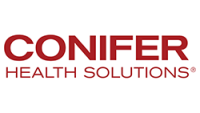New thinking: Shifting the revenue cycle paradigm for long-term success
The healthcare industry has experienced more movement amid the extraordinary circumstances during the past two years than perhaps any other business sector. And the pace is only accelerating.
The new reality presents challenges on multiple fronts for the healthcare industry and any organization linked to its access, delivery, compliance and payment systems. Providers and payers alike must adapt to workforce capacity restraints, consumerism, evolving regulations, increased risk and vigilant financial management to solve new and complex problems.
Yet anywhere there is something moving, there’s an opportunity to move forward.
The wake of change brings boundless opportunities within revenue cycle management to advance performance and the patient experience. Rethinking strategies around three fundamental areas will help healthcare providers maintain fiscal footing: staffing, financial management and RCM partners.
Staffing
In today’s economic environment, staffing issues keep CEOs in every business awake at night, not only from the stress of recruiting but also the cost implications of contract labor, wage inflation, turnover and onboarding. The difficulties will continue to intensify with growing employee burnout and mounting expectations of working from home.
While progress has been made to create remote or hybrid work environments for many functions within healthcare and revenue cycle management in particular, some elements will remain in-person by design. The personal touch is still a hallmark of the industry, and patients expect it.
Even so, innovation and new paradigms allow certain processes to be effectively performed off-site, offshore or a hybrid of the two to alleviate strain on hospital staff and provide additional capacity.
Technology also presents opportunities to improve engagement with patients and drive efficiency within the revenue cycle process. Digital advancements and patient acceptance of automation is opening doors to test check-in kiosks, provide self-scheduling tools, and automate revenue cycle tasks to streamline the registration process and minimize downstream impacts of denied claims that frustrate both patients and providers.
Digital engagements and efforts help identify work that can effectively be performed either by offsite staff or through automation. The determining factors lie in understanding patient comfort levels with offsite staff or automation and how that influences overall patient satisfaction. With the proper support and expertise, revenue cycle management can enable providers to shift specific work functions off-site to allow hospital personnel to focus on patients and a caring culture.
Think about the authorizations that are already performed off-site. Technology can help connect a patient with off-site staff and bypass an on-site patient access representative. In addition, other tools can be deployed to enable that staff member to perform their work faster.
Those two scenarios can help mitigate staffing concerns in three ways:
- Shift non-essential work off-site to refocus hospital staff on in-person patient needs.
- Increase staff efficiency by reducing time spent on routine, administrative tasks.
- Expand the candidate pool by tapping into a vast remote workforce, both stateside and offshore.
Financial management
Keeping pace with market trends, which include heightened regulatory and compliance expectations and changing patient behavior, means that financial performance must keep pace with the changes. Additionally, government mandates such as the No Surprises Act, the recent Payroll Protection Program and related audit pressures are contributing to healthcare organizations’ financial distress. Effective denials management and technology integration that supports regulatory compliance can also lead to better cost and financial management.
Technology and integration is expanding on both the provider side and the payer side. As payers advance, providers must stay in step with the changes or risk playing catch-up. More denials and more requests for information from payers result in delayed payment for services.
Revenue cycle management teams must aggressively manage denials and dig into the data about changes in payer behaviors and denial reasons. Then, issues can be addressed quickly, bringing about a more positive outcome and performance.
RCM partnerships
Evolving with industry changes and integrating automation into a system depends on solving problems creatively and building flexibility. Developing relationships with revenue cycle partners allows healthcare organizations to leverage their partners’ expertise and investment in technology to address specific needs.
Recent RCM automation has been fueled primarily as companies peripheral to healthcare enter the market. Healthcare leaders can stay on top of this influx by partnering with an experienced provider that will integrate the right protocols and enhance tools as the hospital or healthcare system evolves and grows.
Apprehension about possible disruption from outsourcing revenue cycle management can sometimes create inertia about even considering new ideas. Instead, leaders can ease the anxiety by discussing these priorities up front:
- Relentless focus on performance. An RCM partner should enhance performance and reduce costs aimed at improving overall financial results and ROI.
- Transparency and insights. Leverage your data and analytics to stay ahead of the curve and drive how the next stage of your RCM operation takes shape. A clear understanding of what is happening to your patients’ accounts is critical.
- Nimble and flexible. An RCM partner should be agile and comfortable working with different tools and technology, which builds efficiencies and helps healthcare organizations to adapt to changes.
When outsourcing RCM from end-to-end feels too daunting after considering these aspects, leaders can start with point solutions that are easier to integrate, such as early out/self-pay collections, scheduling and pre-registration functions, or segmented accounts receivable support targeting small balances, specific payers or aged accounts. Evaluate each of these areas with a focus on collaboration, transparency and clear lines of accountability.
With the likelihood of the healthcare industry continuing to evolve while driving both efficiencies and new areas of complexity, a collaborative partnership might be the most compelling strategy to keep healthcare organizations moving forward.






